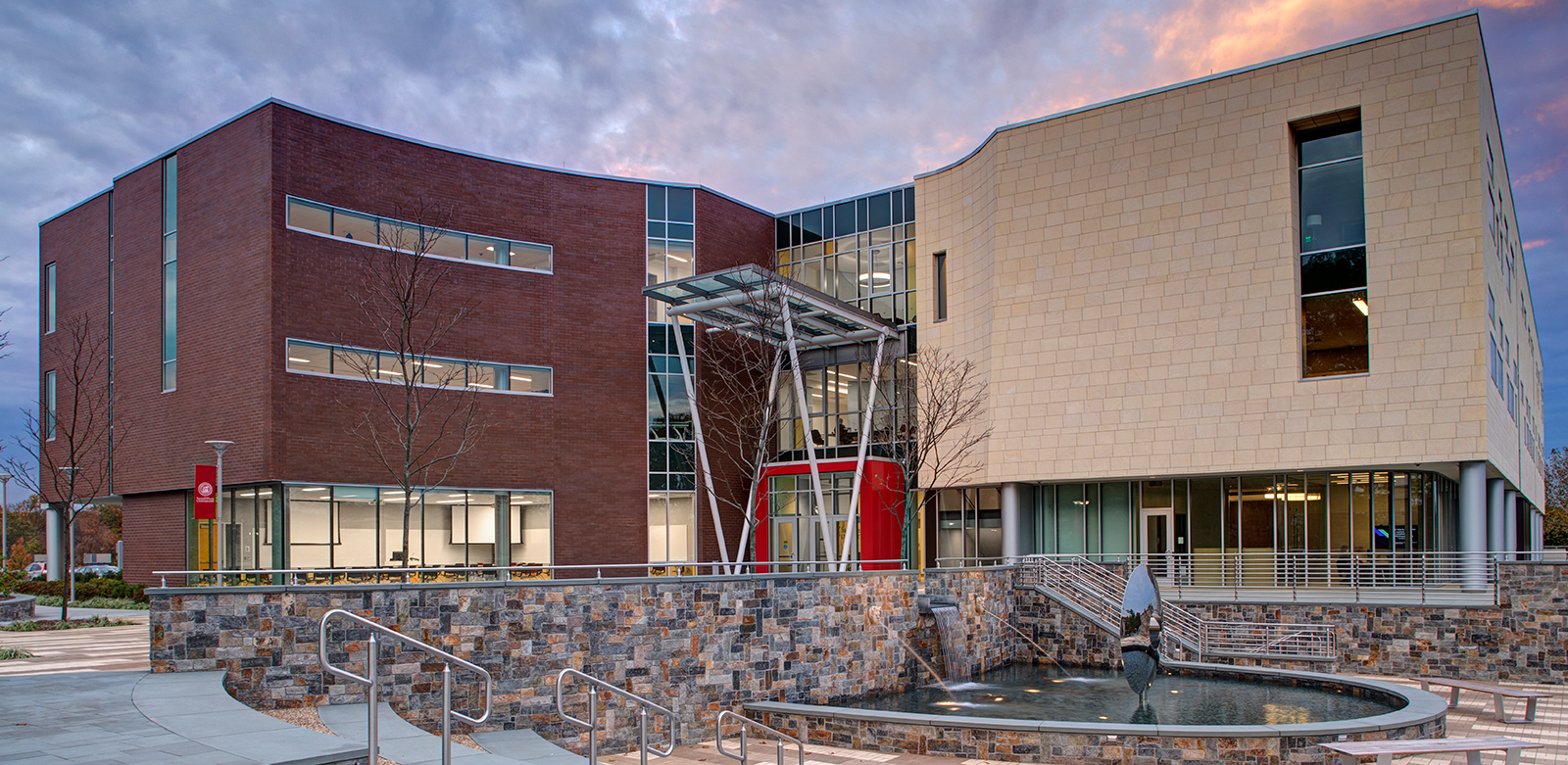
Sacred Heart University’s state-of-the-art Center for Healthcare Education provides nursing and healthcare profession students the rare opportunity to work collaboratively with multiple healthcare fields. Located on 8.68-acres, it transforms an abandoned development with a big hole on a steep slope, into a vibrant new environment to serve the community into the future. Before designing the Center for Healthcare Education, SLAM began a solid relationship with Sacred Heart University, starting with the planning effort for a Campus Master Plan in 2014. Today, SLAM has taken part in transforming the campus with the renovation of Pierre Toussant Hall, the design of the Bobby Valentine Recreation Center, and continued work on the design of two new residence halls on the main campus. SLAM also continues to work on the renovation and design of the newly acquired West Campus buildings.
![[logo]](https://slamcoll.com/wp-content/themes/sub151-SLAM/resources/images/logo-only.png) at-a-glance
at-a-glanceSacred Heart University’s College of Health Professions and College of Nursing programs are highly touted and in great demand. Previously located at SHU’s campus near Trumbull, Connecticut, the programs were housed in repurposed office buildings with inadequate space for students to practice and learn.
In order to accommodate SHU’s growth, mission and strategic goals, a new facility that would provide a shared home for the programs and reflect a commitment to academic excellence and experiential learning was designed for a new 8.7-acre site near SHU’s main campus in Bridgeport, Connecticut. The new three-story, 170,000 SF state-of-the-art facility was unanimously endorsed by the City of Bridgeport, administration, faculty and students.
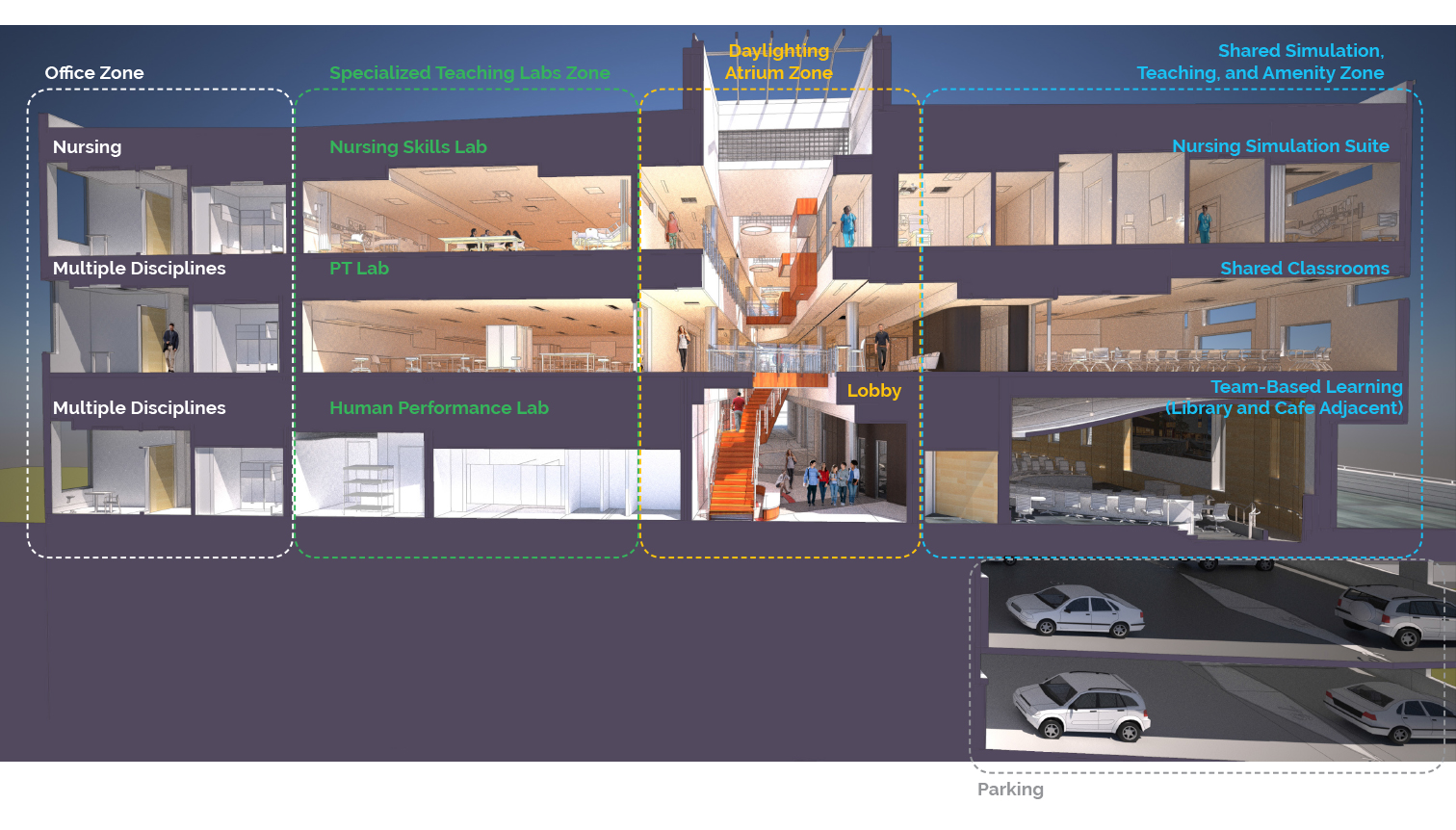
The design organizes the program into three parallel zones. The north zone contains offices, where all full-time occupants have windows. The central zone contains specialized teaching labs and the south zone has an 8,000 SF Simulation Center on the 3rd floor, general shared classrooms on the 2nd floor; and public amenity spaces on the 1st floor – including a library, team-based Learning lecture hall, and Café with outdoor terrace. A 50,000 SF parking garage is concealed beneath the south building, fitting into the natural slope of the Texas limestone.
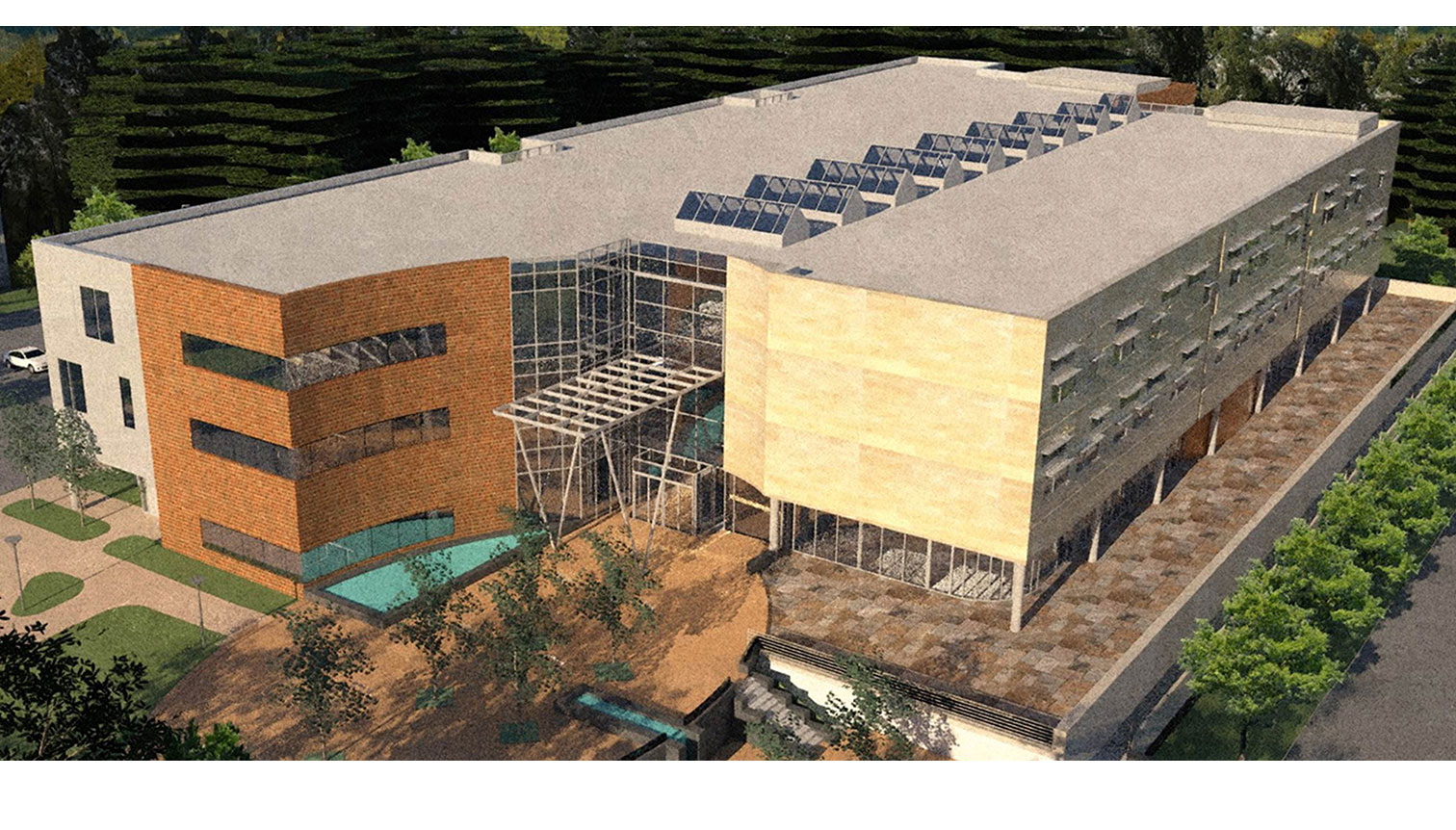
The 3-story Atrium begins to the west of the building at a series of arrival plazas. Expressed on the outside as a glassed-in void between the south and center zones, indirect daylight enters through the entire length and depth of the building. The Atrium also functions to visually connect the three floors, encouraging multidisciplinary awareness by incorporating a great deal of interior glass to showcase specialty teaching labs.
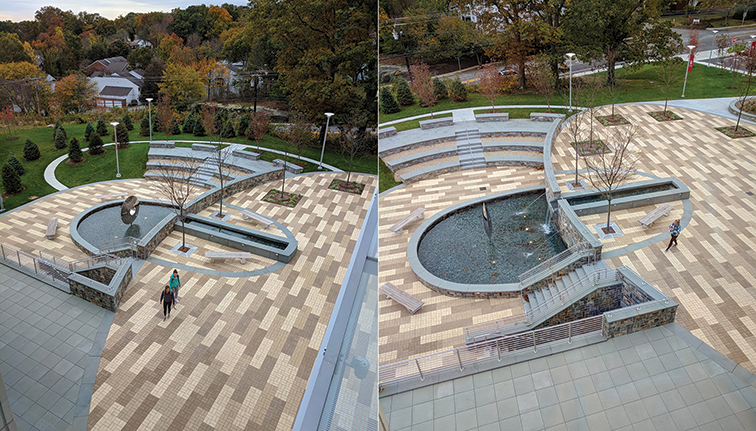
A main upper plaza receives arriving users and orients them towards the main entrance and central atrium. A granite water feature flows into a lower plaza reflecting pool that contains a sculpture by David Harber.
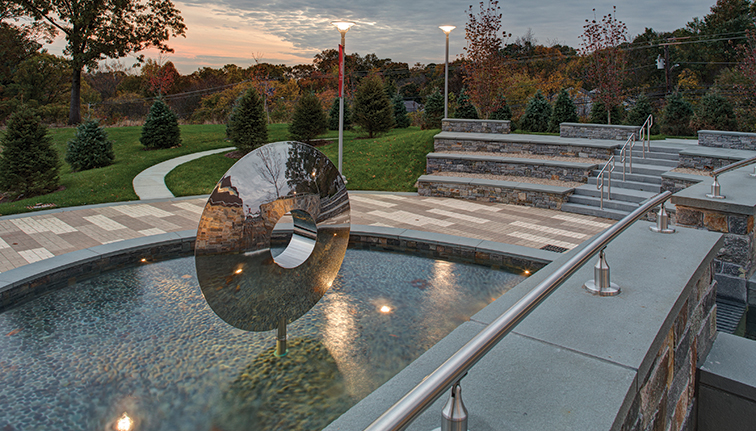
The contemplative space is flanked by an amphitheater of tiered stone seating, encouraging formal or informal gatherings. Falling water flows through a granite feature connecting the upper plaza and lower plaza.

